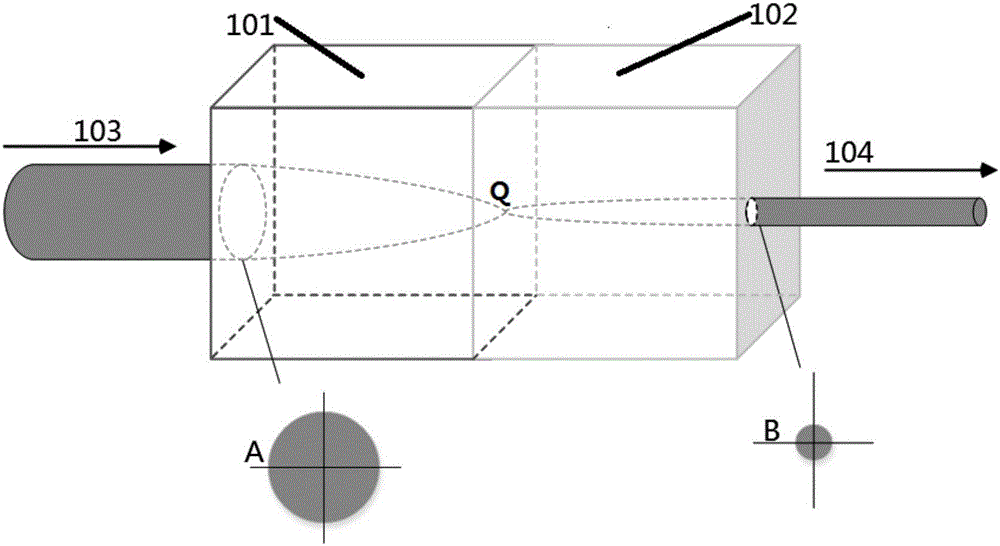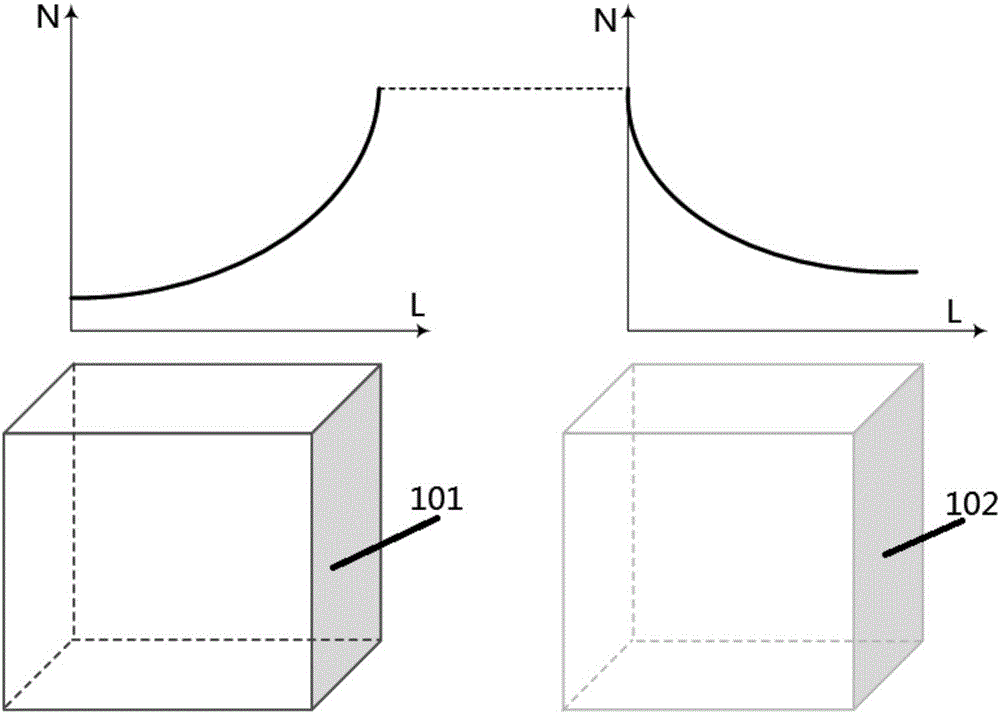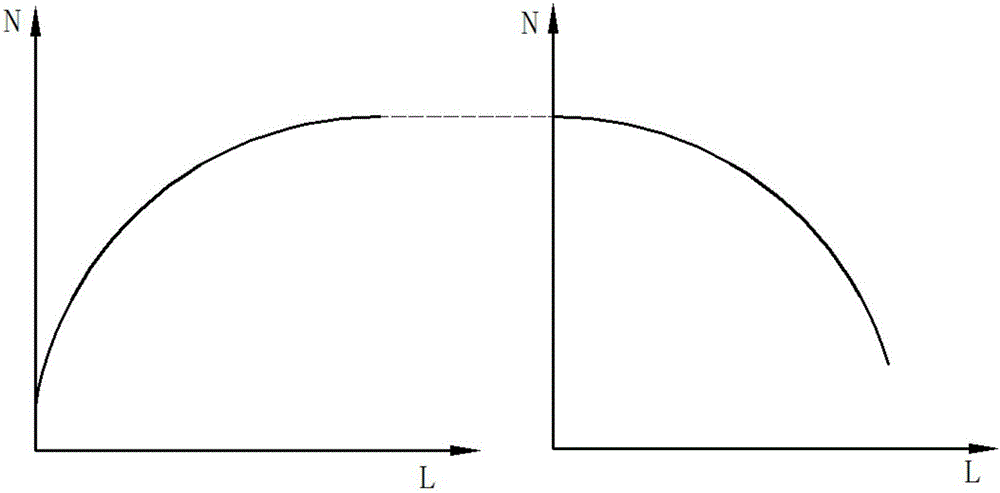Flow cytometer light beam shaping system based on gradient refractive index lens
A graded refractive index and flow cytometry technology, which is applied in the field of flow cytometer instruments, can solve the problems of difficult adjustment, small beam expansion ratio, and inability to change the shape of the spot, and achieves the effect of simple use and convenient installation.
- Summary
- Abstract
- Description
- Claims
- Application Information
AI Technical Summary
Problems solved by technology
Method used
Image
Examples
Embodiment 1
[0023] figure 1 It is a system diagram of a flow cytometer beam shaping system based on a gradient index lens of the present invention. like figure 1 As shown, a graded index lens-based flow cytometry beam shaping system includes a first lens 101, a second lens 102 and a laser (not shown). The incident laser beam 103 emitted by the laser passes through the first lens 101 and the second lens 102 to form an outgoing laser beam 104 . The cross-sectional spot of the incident laser beam 103 is A, and the cross-sectional spot of the outgoing laser beam is B. The difference between the cross-section spot is B and the cross-section spot is A is that the size of the spot has changed.
[0024] The incident laser beam 103 reaches the first lens 101, since the refractive index of the first lens 101 gradually increases along the axial direction, as figure 2 As shown in the figure on the left, the vertical axis N represents the refractive index, and the horizontal axis L represents the...
Embodiment 2
[0030] image 3 It is a graph showing the variation of the refractive index of the gradient index lens in Example 2 of the present invention. like image 3 As shown, the left figure represents the refractive index change curve of the first lens 101, and the right figure represents the refractive index change curve of the second lens 102. The difference between this embodiment and Embodiment 1 is that the refractive index of the gradient index lens occurs The absolute value of each slope of the lens refractive index curve in this embodiment increases gradually as the length L increases.
[0031] The incident laser beam reaches the first lens, such as image 3As shown, the vertical axis N represents the refractive index, and the horizontal axis L represents the length of the lens. The refractive index N of the first lens increases with the increase of the length L, and the trend of the refractive index curve is an increasing curve of a parabolic function. Compared with the si...
Embodiment 3
[0033] Figure 4 It is a graph showing the variation of the refractive index of the graded-index lens in Example 3 of the present invention. like Figure 4 As shown, the left figure represents the refractive index change curve of the first lens 101, and the right figure represents the refractive index change curve of the second lens 102. The difference between this embodiment and Embodiment 1 is that the refractive index of the gradient index lens occurs In this embodiment, the trend of the lens refractive index curve is a linear function graph, the slope of the refractive index curve is equal everywhere, and the spot size changes at a uniform speed when the laser beam propagates in the gradient index lens.
PUM
 Login to View More
Login to View More Abstract
Description
Claims
Application Information
 Login to View More
Login to View More - R&D
- Intellectual Property
- Life Sciences
- Materials
- Tech Scout
- Unparalleled Data Quality
- Higher Quality Content
- 60% Fewer Hallucinations
Browse by: Latest US Patents, China's latest patents, Technical Efficacy Thesaurus, Application Domain, Technology Topic, Popular Technical Reports.
© 2025 PatSnap. All rights reserved.Legal|Privacy policy|Modern Slavery Act Transparency Statement|Sitemap|About US| Contact US: help@patsnap.com



